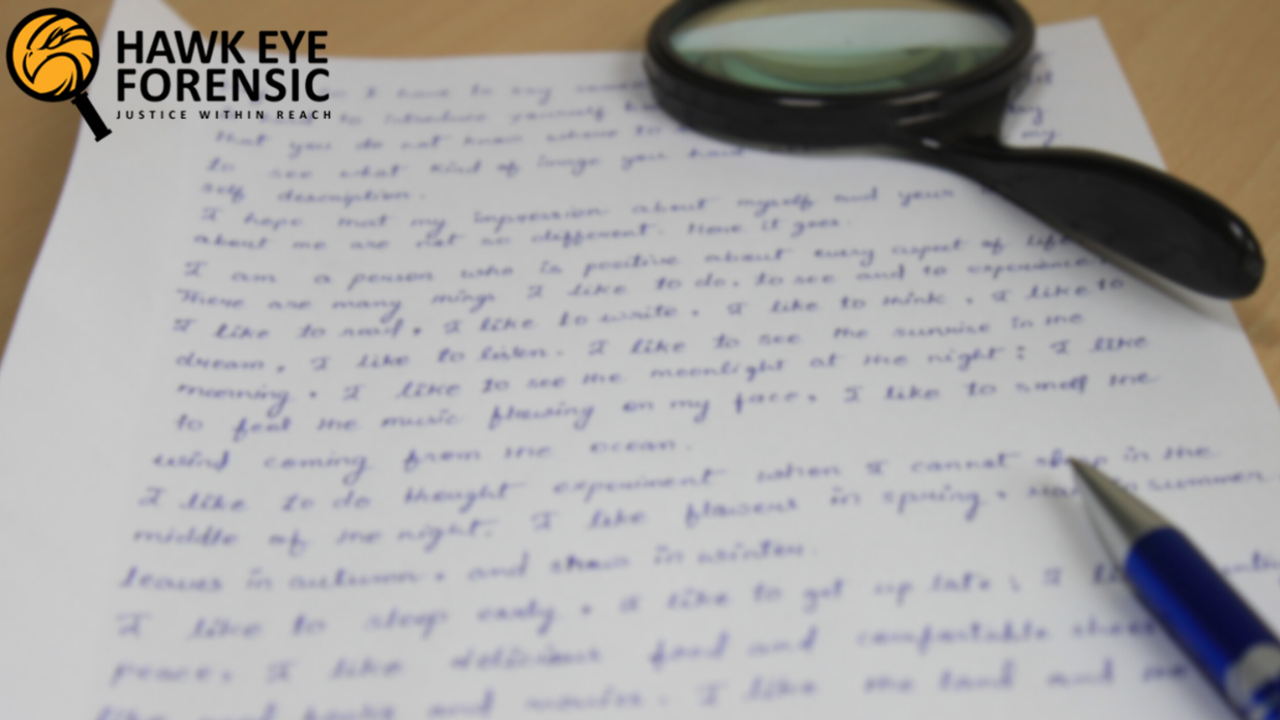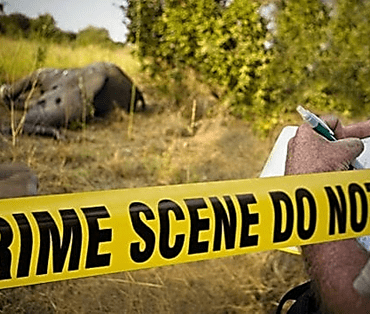Introduction
Graphology, the study and analysis of handwriting, has been a subject of fascination for centuries. Even though it is frequently associated with personality assessment and hiring processes, graphology also plays a significant role in forensic science. This blog explores the intriguing field of graphology within the context of forensic science, examining how handwriting analysis can be a valuable tool for investigators in solving crimes, identifying perpetrators, and providing insights into criminal behavior.
Understanding Graphology
Graphology, also known as handwriting analysis or graphoanalysis, is based on the idea that an individual’s handwriting is a reflection of their personality, emotions, and behavioral traits. While it is essential to clarify that graphology is distinct from forensic document examination, which focuses on the physical aspects of documents and signatures, graphology still holds relevance in certain forensic contexts.
Basic Principles of Graphology
Graphologists analyze various aspects of handwriting, including:-
Size and Proportion-:
Examining the size of letters, the spacing between words, and the overall proportions of the writing.
Pressure and Pen Movement-:
Assessing the pressure applied on the paper, the flow of the writing, and the direction of strokes.
Slant and Inclination-:
Observing the angle at which letters are slanted, as well as any irregularities in the slant.
Connections and Margins-:
Analyzing how letters connect, the placement of words on the page, and the alignment of margins.
Graphology in Forensic Science
Criminal Profiling and Behavioral Analysis-:
In forensic research, graphology is frequently used as a tool for behavioral analysis and criminal profiling. By studying the handwriting found at a crime scene, investigators can gain insights into the potential personality traits and emotional states of the perpetrator. For example, an aggressive and impulsive personality might be reflected in forceful and erratic handwriting, while a meticulous and detail-oriented individual may exhibit precise and controlled writing.
Threatening Letters and Extortion Cases-:
In cases involving threatening letters, extortion, or ransom notes, graphology can be instrumental in narrowing down potential suspects. Analyzing the linguistic content of a written threat alongside handwriting characteristics can help create a profile of the individual behind the communication. This information aids investigators in focusing their efforts on individuals who match the psychological profile derived from the handwriting.
Identity Verification and Forgery Detection-:
Graphology is also used in forensic document examination to verify the authenticity of signatures and handwritten documents. By comparing known handwriting samples with questioned documents, forensic experts can determine whether a particular individual is likely to be the author. This is particularly relevant in cases of identity verification, wills, and legal documents.
Psychological Autopsies-:
In some cases, where the cause of death is unclear or there is suspicion of foul play, psychological autopsies may be conducted. Analyzing the handwriting of a deceased individual can provide clues about their mental state leading up to the event. This information, combined with other forensic evidence, contributes to a more comprehensive understanding of the circumstances surrounding the death.
Challenges and Controversies
While graphology has been used in forensic contexts, there are still some challenges and controversies. One major criticism is the lack of scientific validation and standardization in the field. Graphology is often considered a pseudoscience by many in the scientific community, as its principles and methodologies are not consistently supported by empirical evidence.
Subjectivity and Interpretation-:
One of the primary challenges in graphology is the subjective nature of interpretation. Depending on how each graphologist interprets the characteristics of handwriting, they may come to different conclusions. It is challenging to guarantee reliability and consistency in the results due to the lack of standardized criteria for analysis.
Admissibility in court-:
Graphology faces challenges regarding its admissibility in court. Many legal professionals question the scientific validity of handwriting analysis, and courts may find it difficult to admit graphological evidence due to concerns about its reliability and subjectivity.
Ethical Considerations-:
There are ethical considerations surrounding the use of graphology in forensic science. The impact of graphological findings on legal processes is a matter of concern due to the subjective nature of analysis and the possibility of bias, particularly when presented as conclusive evidence.
Future Directions in Graphology
Despite the challenges and controversies, there are potential areas for growth and improvement in the field of graphology within forensic science.
Integration with Technology-:
Technological advancements like artificial intelligence and machine learning have the potential to enhance the objectivity and consistency of graphological analysis.
Collaborative Approaches-:
Collaboration between graphologists, forensic document examiners, and other forensic experts could contribute to a more comprehensive and multidisciplinary approach to handwriting analysis. Combining graphology with other forensic techniques may strengthen the overall reliability of results.
Education and Training-:
Establishing standardized training programs and certification processes for graphologists could enhance the professionalism and credibility of the field. Clear guidelines for conducting analyses and interpreting results could contribute to greater consistency in graphological evaluations.
Case Studies in Graphology
The Zodiac Killer-:
One of the most infamous cases where graphology played a role is the hunt for the Zodiac Killer, an unidentified serial killer active in the late 1960s and early 1970s. The Zodiac Killer used ciphers and cryptic letters to ridicule law enforcement and the media. Handwriting analysis was employed to study the writing style and to learn more about the personality of the killer. Graphology helped in the ongoing investigation, even if the identity of the Zodiac Killer is still unidentified.
The Son of Sam-:
The Son of Sam, also known as David Berkowitz, was a notorious serial killer who terrorized New York City in the 1970s. Berkowitz left handwritten letters at crime scenes and sent messages to the media. Handwriting analysis played a role in linking the letters to Berkowitz, contributing to his arrest and conviction.
Conclusion
Graphology, the study of handwriting, presents both opportunities and challenges within the realm of forensic science. While it has been utilized in criminal profiling, threat analysis, and document examination, the lack of scientific validation and standardized methodologies has led to disapproval and controversy. As technology continues to advance, there is potential for graphology to evolve, incorporating automated tools and collaborative approaches to enhance its reliability and objectivity.
Graphology has been used in high-profile criminal cases in the past, which indicates its potential impact on forensic investigations, although it should be used cautiously and with awareness of its limitations. As forensic science continues to evolve, so too may the role of graphology, offering unique insights into the minds of individuals through the examination of their written words.





Post comments (0)